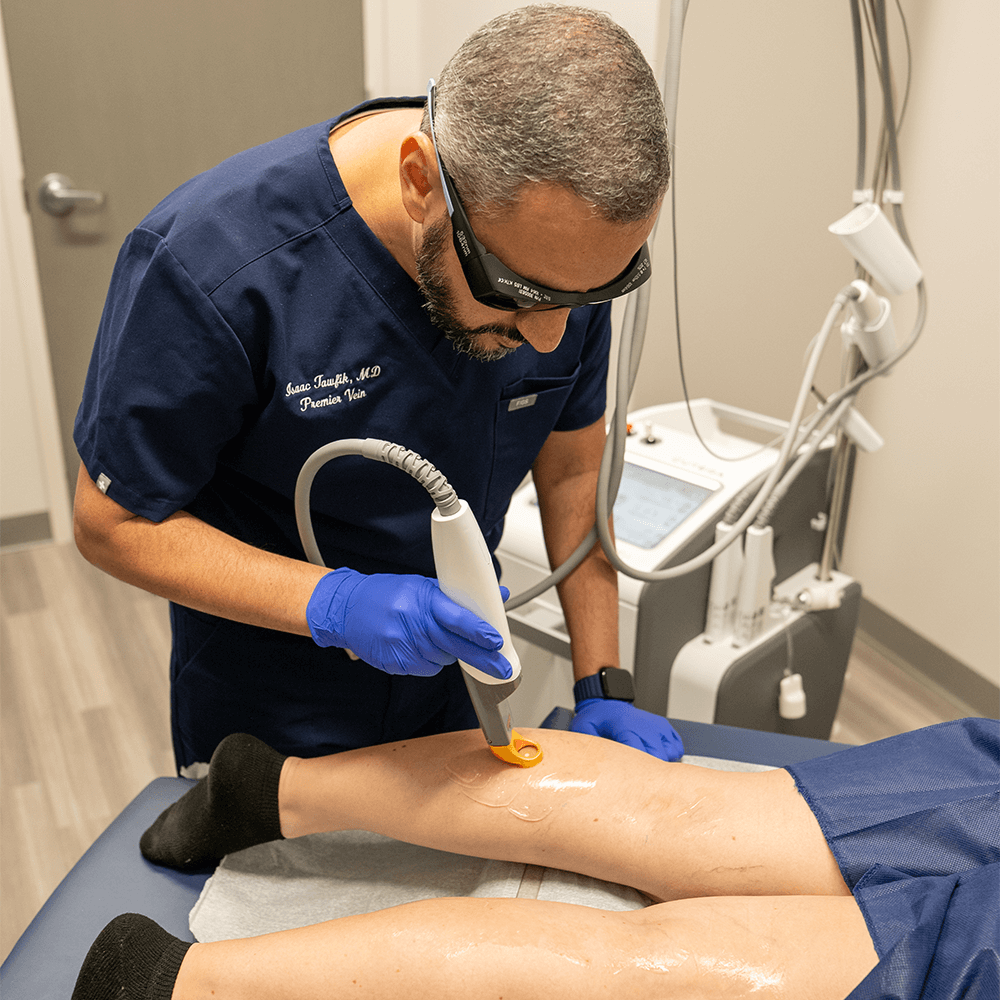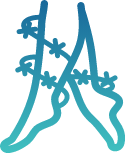
Facial Veins
Facial veins, also referred to as telangiectasia or spider veins, are thin, damaged veins that appear close to the skin’s surface. Because the skin around our cheeks, nose, eyes, and eyelids is more thin than on other parts of the body, the face is more susceptible to visible facial veins. This condition may not only affect one’s appearance but can also lead to self-consciousness. Whether you’re bothered by visible facial veins or concerned about symptoms you’re experiencing, Premier Vein & Vascular can provide expert advice and treatment.
Symptoms of Facial Veins
Facial veins are characterized by the appearance of fine, thread-like lines or red, blue, or purple on the cheeks, eyelids, nose, and other parts of the face. While facial veins are typically asymptomatic, some may experience:
Causes of Facial Veins
Facial veins can be caused by various genetic and environmental factors, as well as various conditions that weaken, damage, or dehydrate facial skin.
Risk Factors for Facial Veins
Facial veins are more visible against lighter skin tones.
Women are more prone to developing facial veins, particularly due to hormonal changes during pregnancy or menopause.
Excessive alcohol consumption can affect blood flow and contribute to the dilation of blood vessels, potentially leading to the development of facial veins.
Skin conditions like eczema may contribute to the development of visible blood vessels on the face.
Treatment for Facial Veins
Facial veins can be treated by a vein specialist like Dr. Tawfik using minimally invasive procedures that target the visible blood vessels. Depending on the cause of the condition, a dermatologist may also be able to treat facial veins with various laser treatments or chemical peels.

Excel® V+ directly targets facial veins using a high-power laser. The laser heats the targeted veins, causing the vein walls to collapse and seal shut.
Learn More

FAQs
Most cases of facial veins are not painful. However, some may experience mild sensations of itching, burning, or pain around the veins.
While it may not be possible to prevent all instances of facial veins, measures such as sun protection, avoiding excessive alcohol consumption, and managing skin conditions like rosacea can help reduce the risk.
In most cases, facial veins are harmless and only a cosmetic concern. However, they can sometimes be associated with more serious conditions, such as vascular diseases or liver disease.

